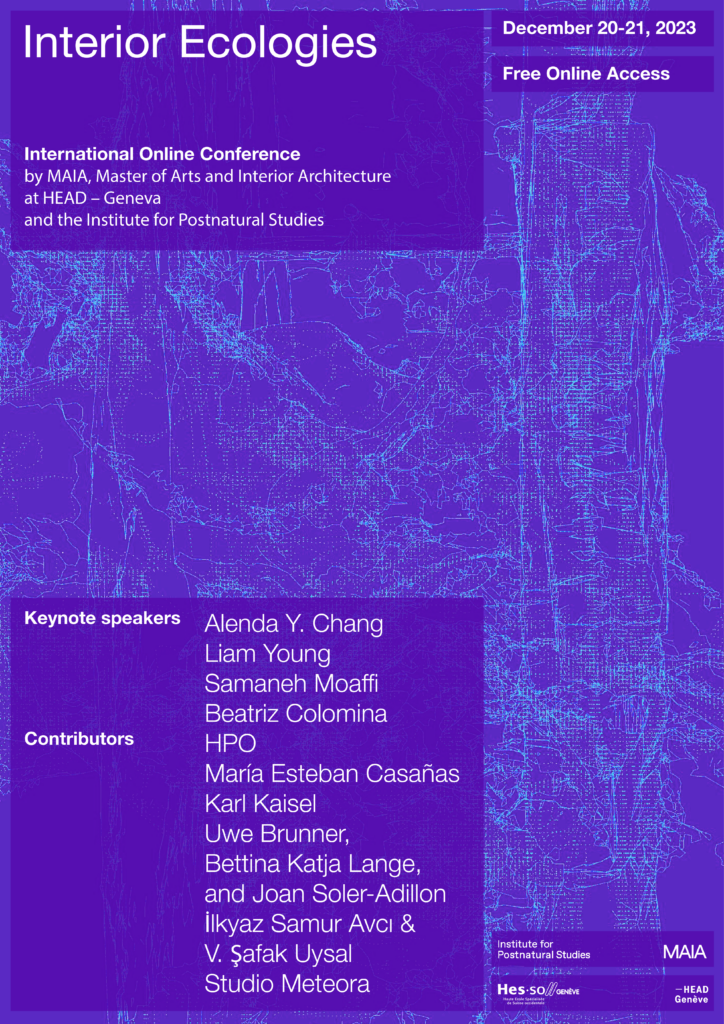
INTERIOR ECOLOGIES
International Online Conference
MAIA, Master of Arts in Interior Architecture (HEAD – Genève)
Institute for Postnatural Studies
December 20-21, 2023
The second edition of the Interior Ecologies conference, organized by MAIA, Master of Arts in Interior Architecture at HEAD – Genève, and the Institute for Postnatural Studies, will delve into the intersection between the built environment and new emerging ecologies. It will explore the impact of digitalization on interior architecture and its relationship to computational ecologies, social media, non-human relations, postnatural territories, video games, and artificial intelligence. The conference will be fully online, with free registration and open access, and will integrate innovative formats of broadcast, fostering interaction between speakers, the audience, and AI-generated content. The event will feature a series of lectures, round tables, and experimental performances, showcasing the latest research and design approaches in architecture, ecology, and media.
The presentations will focus on various themes, including Ecologies of Media, which delves into the intricate relationship between digital platforms and the built environment. Challenging traditional notions of wilderness preservation, one presentation views Earth as a “rambunctious garden,” extending this approach to virtual worlds and advocating for a more environmentally intelligent game design. Additionally, Digital Environments and Video Games will be explored as innovative tools for designing and testing interior spaces, with a particular emphasis on discussions about the potential of virtual environments to simulate user experiences and behaviors, and the challenges involved in translating game dynamics into physical spaces. One presentation will envision a future with a massive city for Earth's population, while a different exploration will propose a “transspecies architecture” that embraces collaboration between humans and other species.
The topic of Artificial Intelligence will prompt a critical examination of the use of AI algorithms in architectural design processes, the integration of smart systems into interior spaces, and the ethical and environmental considerations associated with post-natural design practices. The conference will research the intersection of human creativity and AI in post-natural design, using a custom-trained AI algorithm to study interior ecologies, including presentations exploring diverse perspectives from a multispecies viewpoint. Lastly, Psychic Ecologies will delve into the impact of interior architecture on human emotions, behaviors, and social relationships. The projects will investigate the meaning of space in an era of connectivity through performative lectures, with experts discussing the influence of elements such as color, texture, and sound on human and non-human cognition and perception. Overall, the conference will provide a unique online platform for interdisciplinary exchange and experimentation, fostering innovative approaches to analyze new interior ecologies.
Scientific Committee:
MAIA, Master of Arts in Interior Architecture, HEAD – Genève
Institute for Postnatural Studies, Madrid
Download the conference program here:
More information can be found on the conference website
here.

